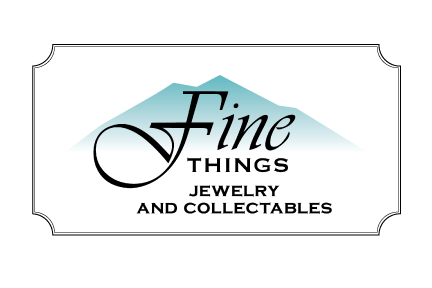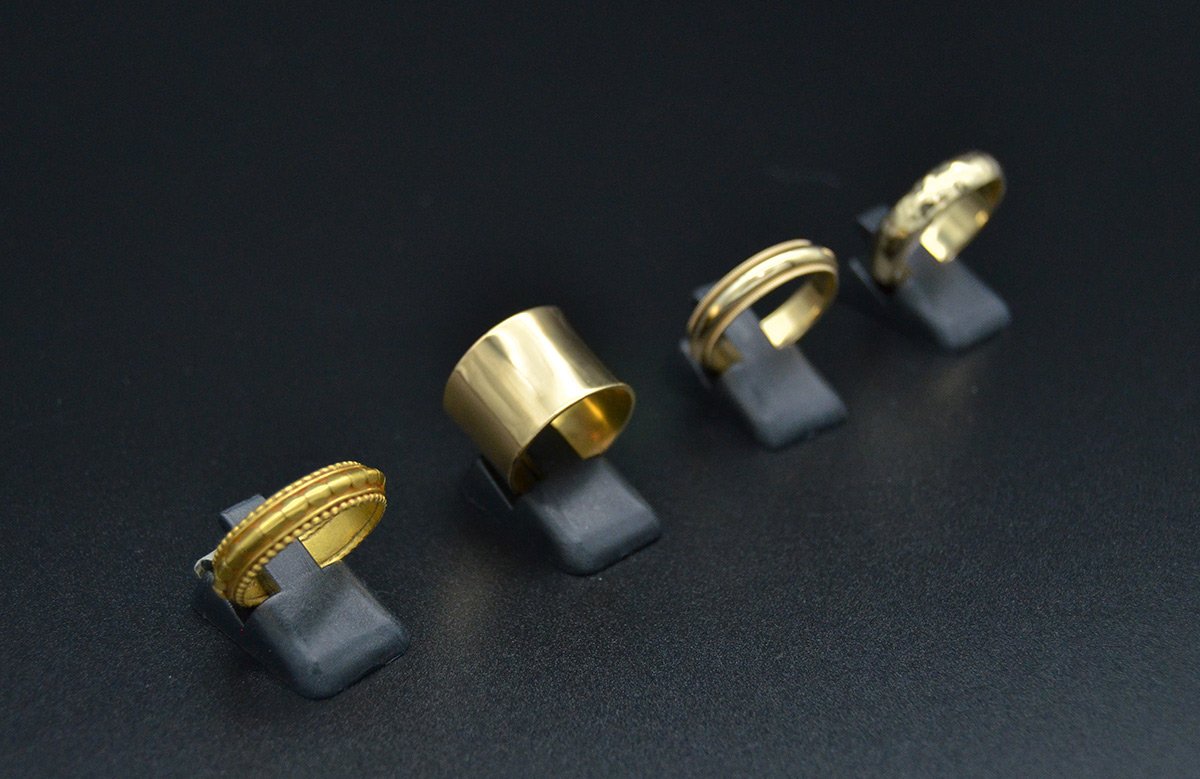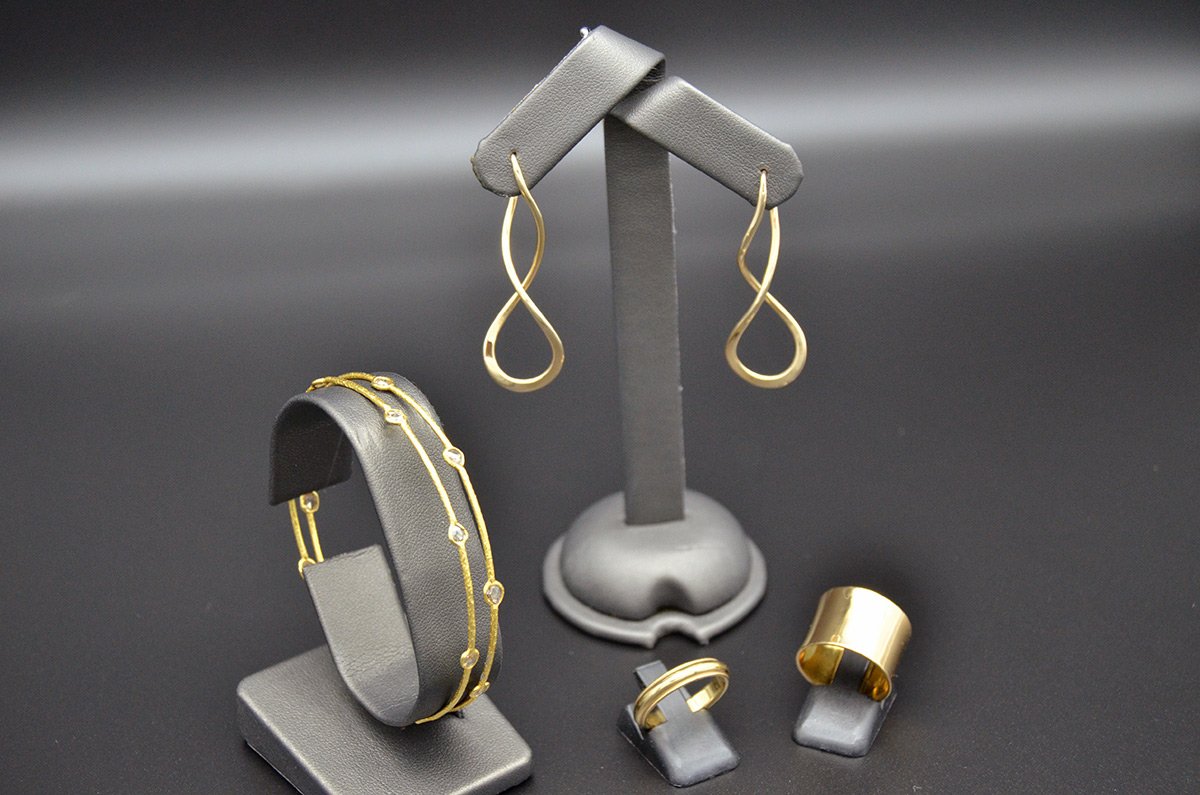Your Guide to Gold Jewelry
Gold was first discovered as shining, yellow nuggets. “Gold is where you find it,” so the saying goes, and gold was first discovered in its natural state, in streams all over the world. No doubt it was the first metal known to early hominids.
Gold became a part of every human culture. Its brilliance, natural beauty, luster, and its great malleability and resistance to tarnishing made it enjoyable to work and play with.
Gold is the easiest of the metals to work. It occurs in a virtually pure and workable state, whereas most other metals tend to be found in ore-bodies that pose some difficulty in smelting. Gold’s early uses were no doubt ornamental, and its brilliance and permanence (it neither corrodes nor tarnishes) linked it to deities and royalty in early civilizations.
It wasn’t until 2600 B.C. that the ancient Mesopotamians would forge some of the first gold jewelry, paving the way for a variety of aesthetic and decorative uses – both as adornment for humans and structures alike. In 1223 B.C. the iconic Tutankhamen’s tomb was constructed primarily of gold, and legend has it that in 950 B.C. Solomon’s famed temple was built using gold as a prevalent construction material.
How to Buy Gold Jewelry
When searching out a piece of precious jewelry with quality gemstones and diamonds certain questions arise that you should ask.
What karat gold is used in the base, or foundation, of your piece?
Is the metal solid, or hollow?
Is it gold-dipped, gold-filled, or gold-plated?
Is the ring hand-crafted or machine–made?
The answers to these questions will help to identify the quality of the metal and its settings, as well as whether your gemstones may be natural, treated, dyed, or lab-created. Remember that the quality of your mounting(s) will always determine the true value of your purchase.
Common Colors of Gold:
Yellow Gold
All gold is yellow when it comes out of the mine, but it is too soft to wear untreated. To resolve this in the course of creating jewelry, designers over the world add the gold with a slight amount of silver and brass, or other metal alloys. The percentage of other alloys added will determine the karat weight of the gold (22K, 18K, 14K, etc.). It does not devalue the visual impact of the piece, but it’s important for transforming raw product from the earth to a gorgeous setting of Yellow Gold for any piece of exquisite jewelry.
White Gold
For those who prefer tradition with a twist in their jewelry, many Jewelry Stores offer wonderful pieces in White Gold. This is created by taking Yellow Gold and mixing in either nickel or palladium and silver, then typically it is topped off with rhodium plating to bring out that white shine for a classical effect. In addition, White Gold, with palladium, is usually denser and harder than yellow gold.
Rose Gold
Rose Gold is created by combining Yellow Gold with a good portion of copper and silver, which are much softer metals. The result is a pinkish rosy color. Rose Gold is softer than Yellow Gold, and much softer than White Gold, and rarely has quality gemstones. However Rose Gold with its rich color has become very trendy in the industry and is quite popular with younger customers.
Black Gold
Black Gold is a euphemism for oil, and it can give your friends and family something to gush about. As White Gold may have a rhodium plating to bring out that beautiful sheen, Black Gold is Yellow Gold that has been plated with black rhodium and carbon. The secret to creating this unusual metal is using as much as necessary. It is perfect for highlighting settings and offers a technique to bring out accents, designs, and details to your jewelry.
Other Metals
Another metal frequently used in jewelry with exquisite gemstones and diamonds is Platinum. Buyers have for many decades turned to Platinum for high-end diamond jewelry. It’s an intensive, heavy metal that provides a solid base for your gemstone, and it will keep its look for a long time. That doesn’t mean it’s invincible. It will still frost and scratch as part of the regular life cycle of jewelry, but against a periodic polish, you can protect its white brilliance for the next generation to enjoy. However with the rising value of Gold Jewelry in the last 15 years, Platinum has taken a back seat to discriminate, well-crafted, unique jewelry with precious gemstones and diamonds.
Mixing Gold
It is a fact that too many options can sometimes be a poor thing, do not worry if you cannot choose from all these various colors. Mixing and matching different colors of Gold can be quite rewarding. Many buyers are looking for two-tone Gold jewelry or different metals in the same piece that highlights and accentuates their discerning taste in unique finds. Matching gold colors on different pieces of jewelry is very modern.
Common Gold Jewelry Markings:
24 Karat Gold is 100% Pure Gold and is not mixed with any other alloy metals. It is stamped 24K, 24kt, or 0.999.
22 Karat Gold is 91.7% Pure Gold and has 8.3% mixed with other metal alloys. It is stamped 22K, 22kt, or 0.917.
18 Karat Gold is 75% Pure Gold and has 25% mixed with other metal alloys. It is stamped 18K, 18kt, or 0.750.
14 Karat Gold is 58.5% Pure Gold and has 41.5% mixed with other metal alloys. It is stamped 14K, 14kt, or 0.585.
12 Karat Gold is 50% Pure Gold and has 50% mixed with other metal alloys. It is stamped 12K, 12kt, or 0.500.
10 Karat Gold is 41.7% Pure Gold and has 58.3% mixed with other metal alloys. It is stamped 10K, 10kt, or 0.417. 10 Karat is the lowest gold purity recognized in the United States as “gold”.
Common Treatments on Gold Jewelry:
GF, or G.F.: “Gold Filled”, refers to the item being bonded to a sheet of gold of at least 1/20th the weight of the item. Examples are 14K GF or 1/20 14K GF.
RGP, or R.G.P.: “Rolled Gold Plate”, is the same as Gold Filled, except the gold weight can be less than 1/20th of the item weight. An example is 1/40 14K RGP.
GP, G.P.: “Gold Plated”, refers to an item being electroplated with a layer of gold. There is no minimum layer thickness requirement, meaning it could have any thickness on its surface. An example is 14K GP.
GEP, G.E.P.: “Gold Electroplate”, means the same as gold plated.
1/20: “1/20th the weight of the piece is gold”. This is commonly used to indicate gold filled. However, it can be other ratios besides 1/20. Examples are 1/20 14K or 1/40 14K.
Vermeil is not typically marked, but be aware that it means “Gold Plated Sterling Silver”.
Determining the amount of Gold used in your piece and its value.
In general, first, find out what precious metal it is mainly made of – e.g., gold or platinum. Then, you need to establish the purity of the precious metal – for example, gold that is 14 karats contains about 58.5% pure gold. Next, you can weigh the ring (excluding the weight of any stones), and knowing the purity of its alloy, you can determine how many grams or ounces of the precious metal you actually have. For example, if you have 100 grams of 14-karat gold, then the actual amount of pure gold in it should be around 58.5 g (58.5% purity). When you determine how much pure precious metal your ring contains, you can look up the prices per gram or ounce. These can be found on numerous websites and stock exchanges. Many dealers who buy such metals, and refineries may provide quotes on your precious metals. These quotes will be lower than the market price of the metal on commodity exchanges – for example, scrap gold dealers usually pay about 60%-80% of the market price of gold. This will give you a broad idea of the current value of your precious treasure.





